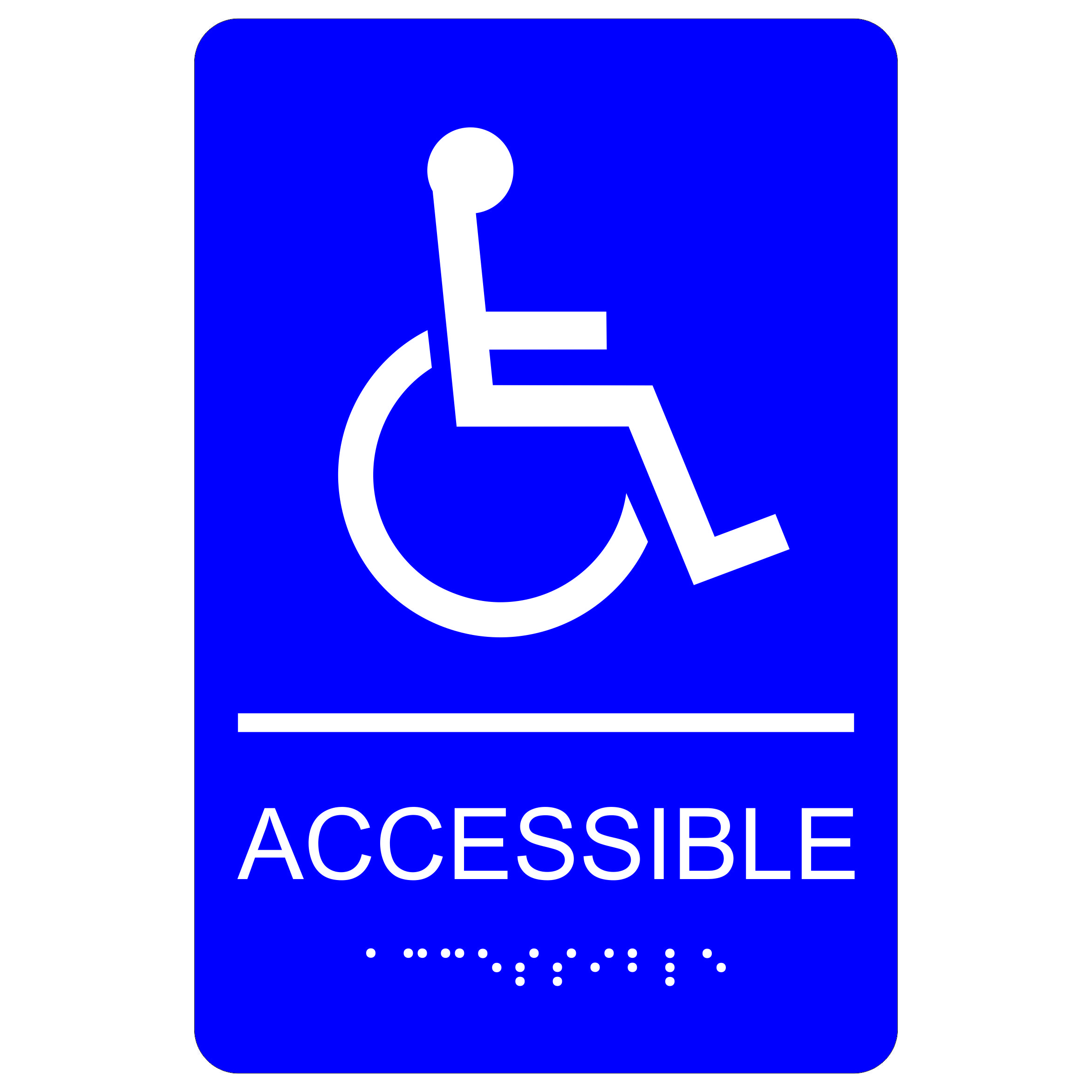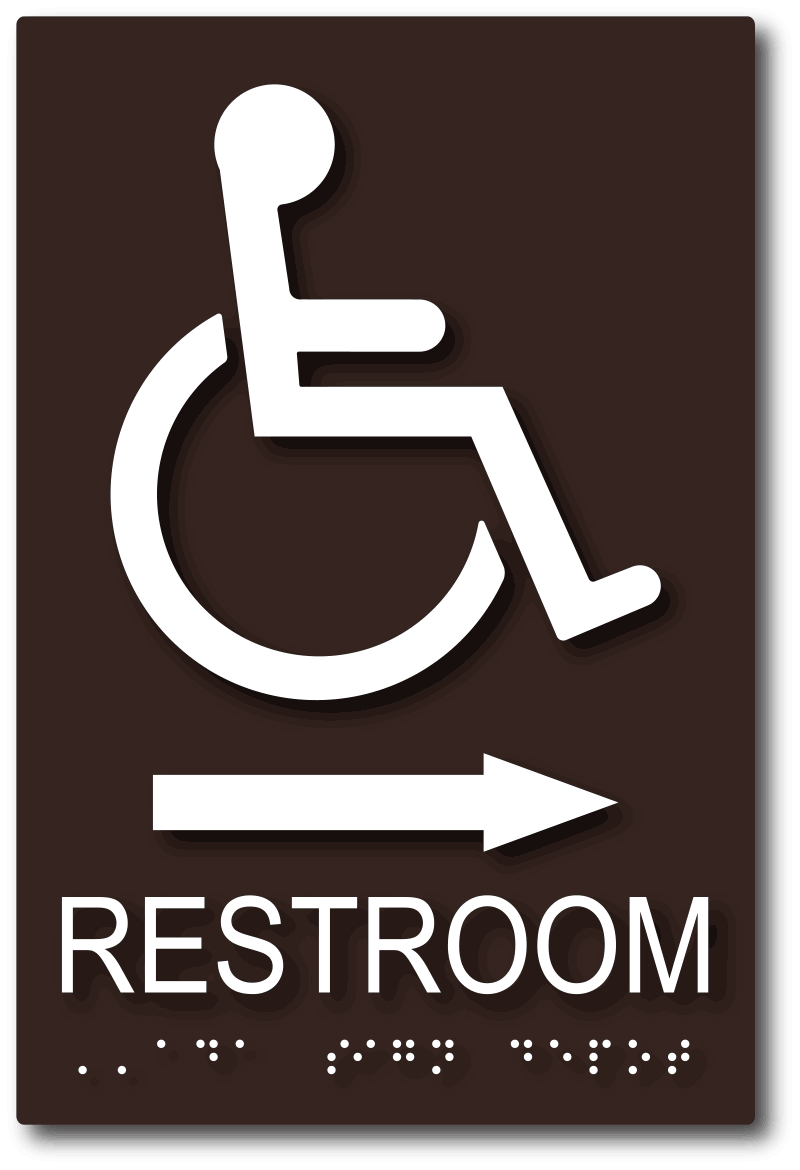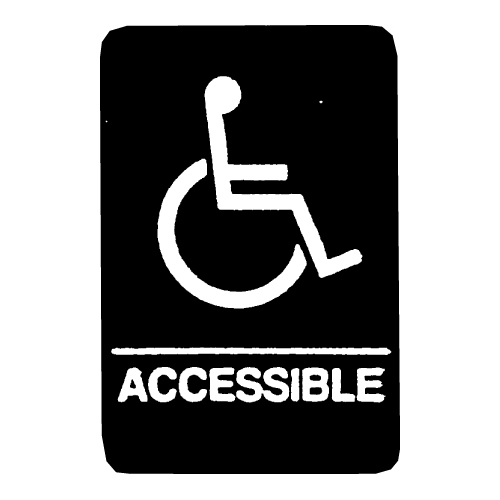Exactly How ADA Signs Improve Access for Everyone
Exactly How ADA Signs Improve Access for Everyone
Blog Article
Discovering the Trick Attributes of ADA Signs for Enhanced Ease Of Access
In the realm of availability, ADA indicators offer as silent yet powerful allies, guaranteeing that rooms are comprehensive and navigable for people with impairments. By integrating Braille and responsive aspects, these indicators break barriers for the aesthetically damaged, while high-contrast shade plans and clear fonts cater to diverse visual requirements.
Relevance of ADA Compliance
Ensuring conformity with the Americans with Disabilities Act (ADA) is critical for cultivating inclusivity and equivalent access in public spaces and workplaces. The ADA, enacted in 1990, mandates that all public centers, companies, and transportation solutions suit individuals with specials needs, guaranteeing they enjoy the exact same civil liberties and possibilities as others. Conformity with ADA criteria not only fulfills lawful obligations but additionally enhances an organization's reputation by demonstrating its dedication to variety and inclusivity.
One of the key aspects of ADA compliance is the implementation of easily accessible signage. ADA signs are created to guarantee that individuals with disabilities can quickly browse through buildings and rooms.
In addition, sticking to ADA laws can alleviate the risk of lawful effects and potential fines. Organizations that stop working to comply with ADA standards might face penalties or lawsuits, which can be both harmful and economically troublesome to their public photo. Thus, ADA compliance is important to promoting a fair environment for everyone.
Braille and Tactile Components
The consolidation of Braille and responsive aspects into ADA signs personifies the principles of accessibility and inclusivity. These features are essential for individuals who are aesthetically impaired or blind, enabling them to navigate public spaces with higher freedom and self-confidence. Braille, a tactile writing system, is vital in offering created details in a layout that can be conveniently regarded through touch. It is generally placed underneath the corresponding text on signs to guarantee that people can access the details without visual support.
Tactile elements expand past Braille and consist of increased signs and characters. These components are designed to be noticeable by touch, permitting people to determine room numbers, restrooms, exits, and various other essential locations. The ADA establishes certain guidelines concerning the size, spacing, and positioning of these responsive aspects to enhance readability and guarantee consistency across various atmospheres.

High-Contrast Color Schemes
High-contrast color pattern play a critical function in enhancing the exposure and readability of ADA signs for people with aesthetic impairments. These schemes are essential as they make the most of the distinction in light reflectance between message and history, ensuring that indications are quickly noticeable, even from a range. The Americans with Disabilities Act (ADA) mandates using details color contrasts to suit those with limited vision, making it a critical element of conformity.
The effectiveness of high-contrast shades hinges original site on their capability to stand out in different lighting conditions, consisting of dimly lit settings and areas with glare. Commonly, dark text on a light history or light message on a dark background is utilized to attain optimal contrast. Black text on a yellow or white history provides a plain aesthetic distinction that aids in quick recognition and understanding.

Legible Fonts and Text Dimension
When considering the style of ADA signs, the selection of readable font styles and proper message size can not be overstated. The Americans with Disabilities Act (ADA) mandates that fonts need to be sans-serif and not italic, oblique, script, highly attractive, or of uncommon type.
The size of the message likewise plays a critical role in accessibility. According to ADA standards, the minimal text elevation must be 5/8 inch, and it ought to enhance proportionally with viewing range. This is particularly essential in public rooms where signage requirements to be read promptly and precisely. Consistency in text dimension adds to a natural aesthetic experience, aiding people in browsing atmospheres effectively.
Moreover, spacing between lines and letters is integral to readability. Sufficient spacing prevents characters from showing up crowded, improving readability. By sticking to these requirements, developers can substantially improve accessibility, guaranteeing that signs serves its designated objective for all individuals, no matter of their visual abilities.
Reliable Placement Approaches
Strategic placement of ADA signs is important for taking full advantage of access and guaranteeing conformity with legal requirements. Properly located indicators direct people with disabilities successfully, facilitating navigation in public rooms. Trick factors to consider include elevation, presence, and proximity. ADA guidelines stipulate that indicators should be mounted at an elevation between 48 to 60 inches from the ground to ensure they are within the line of sight for both standing and seated people. This basic elevation array is essential for inclusivity, allowing mobility device individuals and individuals of differing heights to access details effortlessly.
Furthermore, signs need to be put adjacent to the lock side of doors to enable easy identification before access. Uniformity in sign positioning throughout a facility boosts predictability, decreasing complication and enhancing total individual experience.

Final Thought
ADA signs play a crucial role in promoting ease of access by integrating features that deal with the needs of individuals with disabilities. These elements jointly cultivate a comprehensive setting, highlighting the value of ADA compliance in guaranteeing equal access for all.
In the world of access, ADA indicators serve as silent yet effective allies, making certain that rooms are navigable and inclusive for individuals see post with impairments. The ADA, enacted in 1990, mandates that all public centers, employers, and transportation solutions fit individuals with disabilities, guaranteeing they take pleasure in the exact same rights and possibilities as others. ADA Signs. ADA indicators are developed to ensure that people with specials needs can easily browse with spaces and structures. ADA guidelines specify that indications should be placed at a height in between 48 to 60 inches from the ground to ensure they are within the line of view for both standing and seated people.ADA indicators play a vital duty in advertising access by incorporating attributes that resolve helpful site the demands of individuals with specials needs
Report this page